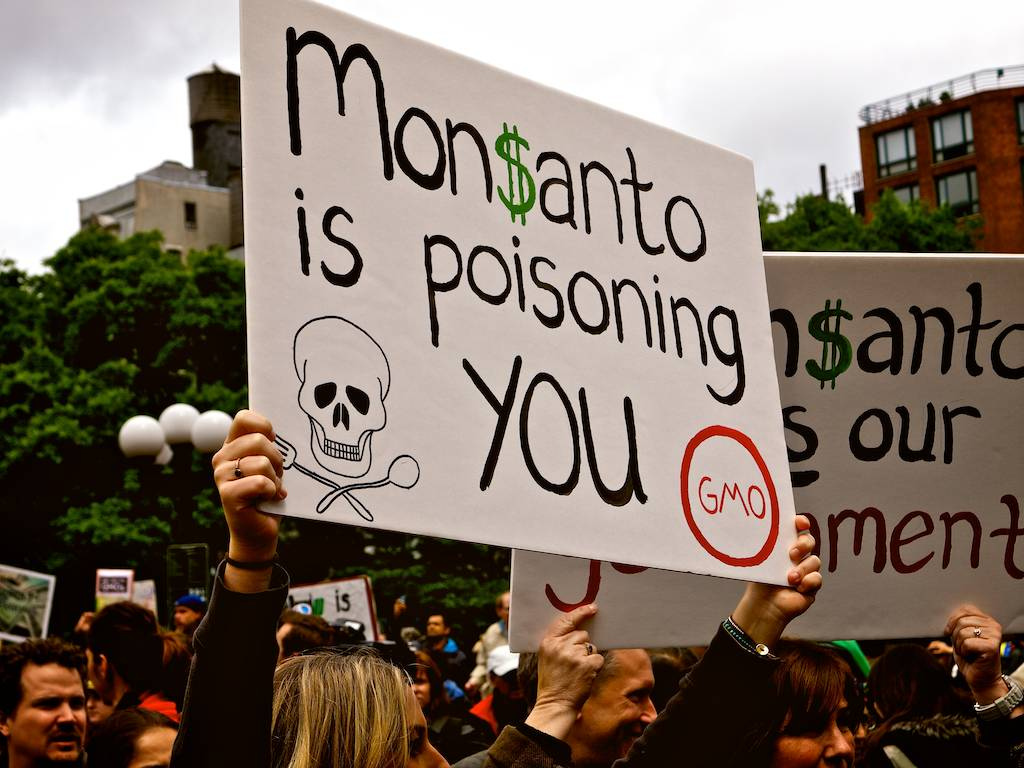
Monsanto, RoundUp and Junk Science
Last weekend demonstrators joined a March Against Monsanto in some 428 cities in 38 countries, including more than 240 cities in the U.S. alone. What exactly has so many people riled up? Monsanto, of course, is an agrichemical and biotech giant, responsible for more than 90 percent of the traits in genetically engineered corn, soy and cotton sold worldwide. The company is a flash point for those who oppose the technology. But now a new issue has emerged.
June 29, 2015 | Source: Huffington Post | by Michael Hansen
Last weekend demonstrators joined a March Against Monsanto in some 428 cities in 38 countries, including more than 240 cities in the U.S. alone. What exactly has so many people riled up? Monsanto, of course, is an agrichemical and biotech giant, responsible for more than 90 percent of the traits in genetically engineered corn, soy and cotton sold worldwide. The company is a flash point for those who oppose the technology. But now a new issue has emerged. Monsanto’s herbicide glyphosate — trade name RoundUp — which is used on most genetically engineered crops (also known as GMOs), is sparking new and serious concern, not just among GMO opponents but among health and environment experts globally.
There is good reason to be concerned with glyphosate and its widespread use on GMO crops. When they were first being introduced in the early 1990s, biotech companies said GMO crops could do many things — produce more nutritious food, resist climatic stress, reduce pesticide use, and confer many other benefits. But, in fact, the characteristic most widely engineered into crops was the ability to withstand RoundUp. This was a win-win for Monsanto — they could sell the engineered seeds, and also sell the weed killer the seeds were designed to withstand. Since this greatly simplified weed control, farmers embraced the seeds and glyphosate use. Today, 90 percent or more of the corn, soy, canola, sugar beets grown on U.S. cropland are varieties that have been engineered to tolerate glyphosate.
Not surprisingly, glyphosate use has increased vastly. In the period between 1996 and 2011, during which GMO crops were introduced into U.S. agriculture, these crops increased herbicide use by 527 million pounds. Use of glyphosate on just two crops, corn and soy, has increased almost 17-fold between 1996 and 2012, from roughly 12.5 million pounds to 210 million pounds.
So what’s the problem here? Glyphosate (RoundUp) has long been touted as virtually harmless. EPA doesn’t even bother to test for residues in food, having decided years ago they pose little risk. But studies to the contrary have gradually been accumulating, and in March of this year, 17 experts from 11 countries meeting at the World Health Organization International Agency for Research on Cancer (IARC), unanimously agreed to re-classify glyphosate as “probably carcinogenic to humans” (e.g. Group 2A). The Chair of the IARC committee was Dr. Aaron Blair, formerly the top scientist on pesticides and cancer at National Cancer Institute.
Monsanto has called the IARC findings “junk science,” as the findings differ from the assessment of regulatory agencies in the U.S. and EU. However, IARC, unlike the regulatory agencies, looks at all the available studies in the scientific literature and does not ignore or downplay studies performed on the formulated product and/or which do not follow narrow testing protocols.
